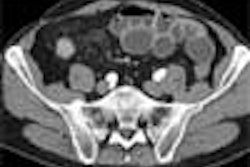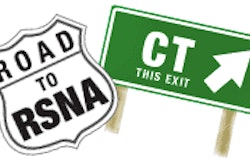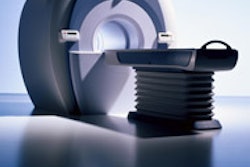Today's rules for virtual colonoscopy billing seem to defy the laws of logic, not to mention the art of medicine. But there is evidence that a sufficiently motivated practitioner can follow the rules and still manage to get paid once in a while.
In an October 29 talk at the International Symposium on Virtual Colonoscopy in Boston, Dr. Matthew Barish offered tips from the billing trenches of today's U.S.-based virtual colonoscopy practice.
"I'm originally an engineer and I expect things to be logical -- and I've never seen such an illogical system as billing and reimbursement exists today," said Barish, who is an assistant professor of radiology at the Harvard University School of Medicine and a radiologist at Brigham & Women's Hospital. "But there's a lot of good news as well, so I'm going to try to explain the methods of billing and reimbursement, and give you as much as I can from my understanding of where we stand in this area."
Two new codes
The best news is that virtual colonoscopy has finally received the nationally recognized Category III CPT codes it has been clamoring for. The two data tracking codes -- 0066T for screening CT colonography and 0067T for diagnostic CTC -- took effect in July, and will become the Medicare standard in January 2005.
Medicare now categorically requires that all screening CT colonography -- that is, virtual colonoscopy of asymptomatic patients -- be billed under the new 0066T code, Barish said. The agency no longer permits the use of the CT unlisted (76499) codes for screening VC for any reason.
At the same time, Medicare also categorically rejects payment for any screening services under the same 0066T code because VC screening is not included in the national coverage decision.
"Unfortunately the AMA and others have determined that VC does not meet these (Category I) criteria," Barish said. "The (Reston, VA-based American College of Radiology) spent many years making sure that barium enema got in there; gastroenterologists made sure conventional colonoscopy was there, and tried to make sure -- and are still making sure -- that radiology procedures don't make it into that national coverage decision."
Code confusion
The most pressing problem with the new Category III codes is that payors are confused by them, Barish said. As a result, some are categorically denying payment for diagnostic CT colonography under 0067T -- for the same service and indications they covered in the past under CT of the abdomen and pelvis with 3D reconstructions.
Another source of confusion is that indications for diagnostic VC under 0067T can overlap with those for CT of the abdomen and pelvis, creating confusion as to which is most correct for a particular patient. And CT of the abdomen and pelvis isn't going away; it will remain on the books even after CT colonography gets its own Category I diagnostic code.
The AMA Web site's section on CPT codes, and the soporific but information-packed Federal Register are essential reference sources for understanding billing and reimbursement, Barish said.
Category III codes are effectively more specific, more functional versions of unlisted codes, he said. They are definitely not research codes; that would be Category II, optional tracking codes. Category I CPT codes define procedures that have been approved by the FDA for a specific use; they are performed across the U.S. in multiple locations, by many physicians, and with established clinical efficacy.
"A Category III code 'does not mean the procedure is experimental or of limited utility' -- that's lifted directly from the Federal Register," he said. "The other thing lifted directly from the Federal Register is the phrase: It is 'not reasonable to categorically deny payment for category III codes.'"
In fact, this last statement makes a compelling argument for radiologists to bring to insurance companies, even Medicare, when they insist that even though CT of the abdomen and pelvis was reimbursable, they won't pay for diagnostic CT colonography under 0067T because it is a category III code, Barish said.
The 0067T code is for symptomatic patients "who don't have an indication -- an ICD9 code that would allow you to bill for CT of the abdomen/pelvis and 3D reconstructions," Barish said. "These patients have symptoms that are referable to the colon -- but not that would allow you to bill for a CT abdomen/pelvis and 3D reconstructions."
The 0067T code can also be used when the referring physician specifically ordered virtual colonoscopy (or CT colonography) rather than CT of the abdomen and pelvis.
Neither the 0066T (screening) nor 0067T (diagnostic) codes can be billed in combination with any CT abdomen/pelvis or 3D reconstruction codes, Barish said. It's one or the other. And patients must sign a Medicare waiver whenever such nonreimbursable services are being billed.
The waiver notifies the patient that the service is uncovered, and that the claim will likely be rejected by Medicare. It acknowledges the patient's right to submit the claim even though the service is uncovered, and notifies the patient that the data will be used to determine eventual RVUs.
Payors who reimbursed for VC under the CPT unlisted code it should continue to do so under the new CPT III code, he said. "Now that's my comment; it's not actually in the Federal Register, but it makes sense," inasmuch as the government considers it unreasonable to categorically deny payment of CPT III codes, Barish said. At any rate it is a logical argument, he said; whether payors will listen is another matter.
Payment progress
Some payors clearly are listening. A handful in Wisconsin and perhaps elsewhere are reimbursing screening CT colonography under 00066T. Medicare in Massachusetts, New Hampshire, Vermont, Wisconsin, California, New Hampshire and perhaps elsewhere have joined with perhaps 20-30 private payors nationwide to reimburse for diagnostic VC under 0067T.
| Billing codes used for virtual colonoscopy exams |
|
 |
|
| 0066T | Screening CT colonography (CPT III) |
 |
|
| 0067T | Diagnostic CT colonography (CPT III) |
 |
|
| 72192 | Computerized axial tomography, pelvis; without contrast material (CPT I) |
 |
|
| 72193 | With contrast material(s) (CPT 1) |
 |
|
| 72194 | Without contrast material, followed by contrast material(s) and further sections (CPT I) |
 |
|
| 74150 | Computerized axial tomography, abdomen; without contrast material (CPT I) |
 |
|
| 74160 | With contrast material(s) (CPT 1) |
 |
|
| 74170 | Without contrast material, followed by contrast material(s) and further sections (CPT I) |
 |
|
| 76375 | Coronal, sagittal 3D reconstruction (CPT I) |
 |
|
| 76499 | Not otherwise classified (NOC) (CPT I) |
 |
|
| V76.51 | Screening for malignant neoplasm, colon (ICD-9 code for diagnosis) |
The problem with RVUs
Medicare will use the data collected from the Category III codes to assess cost and charge data -- and eventually set RVU values for virtual colonoscopy. But as Medicare providers know, you don't actually get what you charge for. Medicare applies a cost-to-charge ratio that compares all of the facilities offering a service, and reduces reimbursement by the resulting ratio, Barish said.
This practice foretells a potentially huge reimbursement problem looming for VC -- i.e., charges currently being captured under the Category III codes will be reduced by a cost-to-charge ratio that could result in severe underpayment in the future, Barish said.
"If you're charging $900 (for VC), if your charge-to-cost ratio is 3, Medicare thinks that procedure should be reimbursed at $300," Barish said. "And that's what they're collecting that charge data for today. I don't have an answer about how to fix this because you obviously can't charge what you should be charging, which is $2,700, to get the real $900 reimbursement."
A similar problem occurred when Medicare created CTA (CT angiography) in order to replace a group of studies that called for CT of the abdomen with reconstructions (a kidney exam, for example) that were previously billable under two separate codes.
Henceforth, Medicare promised, it would pay the sum of both procedure charges under the shiny new CTA code. But many hospitals, through their own negligence, wound up submitting charges for either the CT or the reconstruction, but not both, skewing the Medicare charge and payment data sharply downward.
"Most radiologists including myself, who did a lot of CTAs, didn't ever realize that that's what my hospital had done (billed for the reconstruction only)," Barish said. "In fact we were charging less for a CTA than we were for a noncontrast CT of the abdomen."
The result has been damaging to facilities nationwide, not just his facility, he said. CMS claims data (2001, 2002) show that only 40% of hospitals charge more for CTA than CT. "If we don't learn from our past mistakes in radiology, we're going to repeat them," Barish said.
To begin, VC charges should be set by the hospital's charge master based on current charges for similar procedures, he said. For screening VC, billing should begin with the sum of charges based on abdominal CT without contrast (supine), plus CT pelvis without contrast (supine), plus CT additional images (prone) and 3D reconstructions. Keep in mind that almost all of the 3D reconstruction fee will eventually fall under the technical (rather than professional) category, Barish said.
Case studies
Finally, Barish served up four chilling billing scenarios as brain teasers -- based on real patients . The first was a 59-year-old woman who had never been screened for colorectal cancer. She had undergone aortic valve replacement, two stent implants, and was currently on blood-thinning Coumadin, resulting in contraindications for conventional colonoscopy.
"You have to bill it out using the 0066T (screening CTC) code," Barish said. "And the special ICD-9 code, the V76.51 special screening (for malignant neoplasms, colon). If the patient has a family history of colorectal neoplasm, use V76.51 as the primary diagnosis, and V16.0 (family history) as the additional diagnosis." Of course, Medicare will reject the claim, he said, but "the good news is that several third-party payors are beginning to look at coverage."
The second patient was a 50-year-old man with obstructing sigmoid carcinoma and therefore a failed colonoscopy. It's best to code this as a 0067T with the ICD-9 code for sigmoid carcinoma, if assessing additional lesions in the proximal colon, he said. Many carriers will cover this exam. Alternatively, the exam could be billed as a CT abdomen/pelvis if the main indication (and the reason the requesting physician ordered the study) is for staging of the sigmoid carcinoma.
The third patient was a 63-year-old woman with a negative sigmoidoscopy at age 50, now presenting with anemia and fatigue. The father had had colon cancer; a sister renal cell carcinoma. The patient was scheduled for CT to rule out intra-abdominal cancer, and a double-contrast barium enema to rule out colorectal cancer.
Clinically it made sense to combine the last two exams in a single VC exam, "but unfortunately you can't do that," Barish said. "You can either bill CT abdomen/pelvis and do the VC for free -- that's what we did -- or you can bill for the 0067T (diagnostic) code and do the entire procedure for free -- unless you have some coverage decision decided." There is no accurate way to code this case, he concluded.
Case four was the toughest. A 52-year-old man who had never been screened for colorectal cancer had a personal history of renal cell cancer and nephrectomy four years earlier. He was thought to be free of disease, and was scheduled for a routine follow-up. He didn't want conventional colonoscopy; a brother had experienced bleeding after colonoscopic biopsy, Barish said.
This patient had a valid indication for CT of the abdomen and pelvis (ICD-9 code, personal history of gastrointestinal malignancy). "But we can't code VC. There's no way you can legitimately code for this case," he said. "You could do (the exams) on two separate days, but it sounds crazy from the patient's perspective. So again we ordered CT of the abdomen/pelvis, did the VC for free."
"Billing and reimbursement are not based on logical principles," Barish concluded. "You're just going to have to look into it, read it, and trust someone in your own institution.... You have to avoid the trap of charge-to-cost ratios resulting in lower reimbursement. Don't double-code, and don't ever bill and code based on what you want to do. You have to bill and code based on giving the referring physicians what they asked for, and what you did."
"Be very careful," he said, "because these are things that are being looked at closely today. Build up some credibility and friendship with your gastroenterologists and referring physicians."
By Eric Barnes
AuntMinnie.com staff writer
November 19, 2004
Related Reading
HMO pays for screening virtual colonoscopy, June 4, 2004
CPT codes and the politics of virtual colonoscopy, April 30, 2004
Viatronix gets OK for virtual colonoscopy unit, April 26, 2004
Group credits 3-D reading for best-ever VC results, October 15, 2004
Billing for VC: even the reimbursement is virtual, November 19, 2003
Copyright © 2004 AuntMinnie.com



















